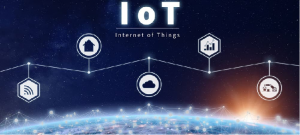
01 Jul The internet of things in your life and your finances
The use of the internet of things in our daily lives is increasingly palpable and the financial sector is one of the first to adapt to this technological trend.
This technology, known in English as the Internet of Things (IoT), has allowed the connectivity of all kinds of objects through sensors that use application programming interfaces (or APIs) to create a network that exchanges data in real-time.
Even though some of its applications may sound like science fiction to us. The IoT is already a reality in our daily lives through smartphones, televisions, and even modern cars.
In industry, its use allows companies to access information that helps them better manage their inventories and resources. As well as anticipate the demand for their products or services and the needs of their customers.
IoT Benefits

The IoT opens up endless possibilities to improve people’s lifestyles but also to boost the profitability of companies.
Among its benefits for both individuals and companies are:
- It enhances the customer experience by enabling the optimal use and proper performance of purchased products and services to get the most out of them. As well as enabling companies to further customize their offerings to meet individual needs.
- It makes business models evolve towards more innovative ones that offer. More than a product or service, extraordinary customer service generates loyalty and increases competitiveness.
- Boost productivity and job satisfaction by making real-time devices and information available to employees to help them make timely decisions. Streamlining processes by automating routine tasks. And enabling collaborative and remote work that improves the balance between professional and personal life.
- Increase the profitability of operations when processes are automated and errors are eliminated. Resources are better managed and the supply chain is optimized to improve customer service.
Examples Of Lot In Everyday Life
If you are not familiar with the concept, you may be surprised that it is already present in your daily life through objects such as the following:
- HOVR Running Shoes from Under Armor. They connect with a free app on your smartphone to give you a record of your running pace and cadence, stride length, and distance covered.
- FlowerPower. A device in the form of a branch that you place next to your plants and that connects with your smartphone, via Bluetooth, to send information in real-time about their water and nutrient needs.
- Garage. An application is available for Android and iOS cell phones that allow you to control access to your garage door. Either to open and close or to allow third parties to enter. It also offers alerts when there is any unauthorized movement.
- Fitbark. A monitor of your dog’s activity and sleep pattern with which you can track his physical condition and his general behavior.
- Replenishment Buttons. Amazon has agreements with suppliers for the creation of smart buttons that are strategically placed in your home. And that register the order of some basic items to the e-commerce giant with a press.
- Plum. A dimmer switch for lighting in your home that is controlled via your smartphone.
- Beacons. Small electronic devices that connect via Bluetooth with smartphones to offer individual information to retail stores and banks so that they can personalize their offers and send them to users in a timely manner when they enter the premises.
IoT In Finance
On the other hand, the internet of things has finance and services that offer great applications. Among the possibilities of this technology in banks and insurance companies are:
- Customize the offers made to clients based on the financial information that the institution already has about them.
- Extend the financing offer to customers of companies that sell high-priced products or services, such as car dealerships.
- Adjust the costs of car insurance policies according to the information that connected vehicles offer about the user’s driving style and the risks that this represents for the calculation of the premium.
- Evaluate risks and quote home insurance according to the behavior of the applicant according to the records of the objects within their home connected to the Internet.
The possibilities are endless and will expand as more everyday objects transmit information in real-time and create behavioral histories, either to control your life or to access financial services tailored to your needs.
You may like to read BEST TRAVEL APPS THAT SHOULD NOT BE MISSING ON YOUR MOBILE


No Comments